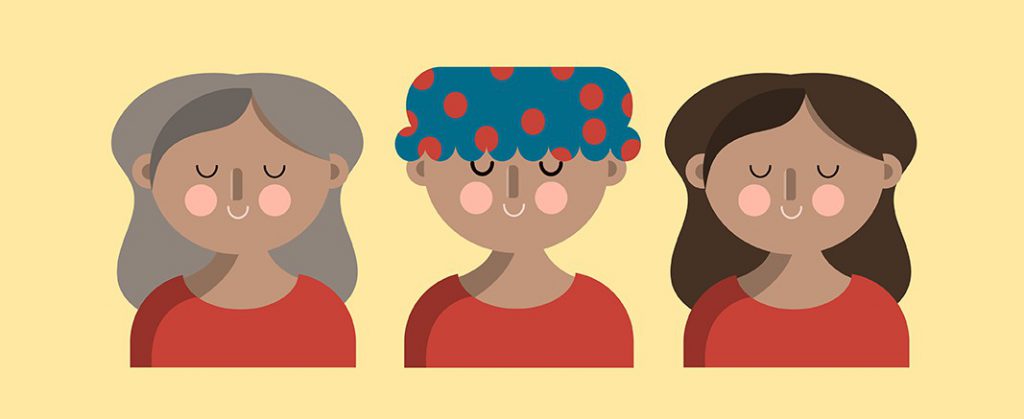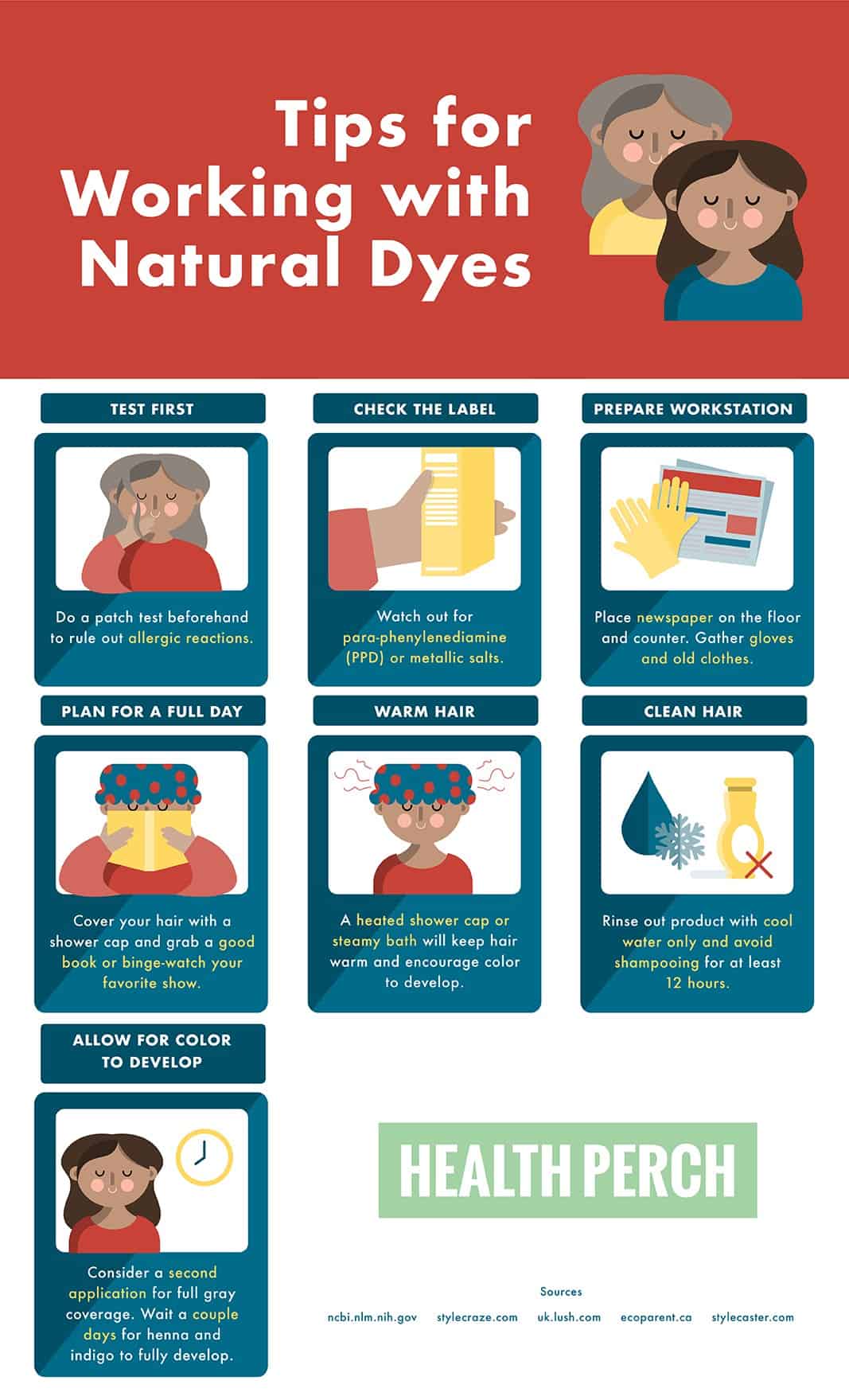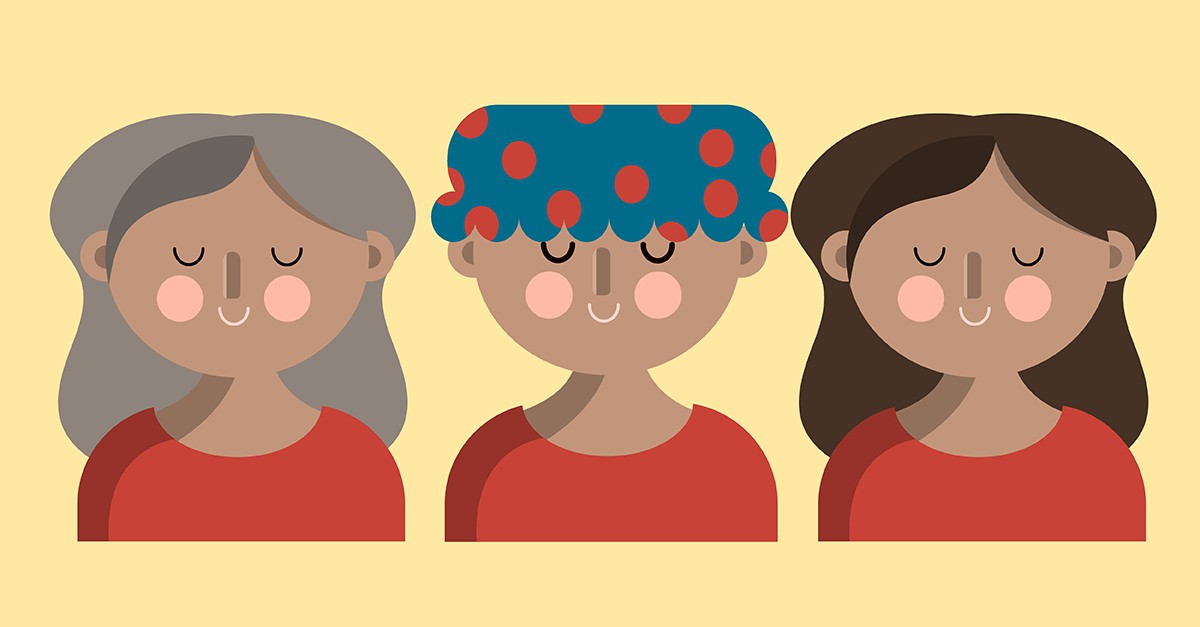
Gray hair is one of the reasons we run to our trusted hairstylist for a dye job or attempt a new shade with box dye at home. While convenient, the chemicals found in conventional dye can do more damage than good. Not only can they weaken hair, chemicals found in permanent hair dye can cause allergic reactions and may be linked to bladder and breast cancers. Ready to find a safer alternative? Read on!
Natural Ways to Dye Hair Safely
First things first, don’t always believe the hype of organic, chemical-free, or “natural” hair dyes found in the beauty aisle. These marketing claims are not regulated by the FDA and don’t necessarily mean the dye is safer than other options — they most likely still use synthetic ingredients to do the job. To go actually go natural — in this case, with completely plant-derived ingredients — try one of the following.
Henna
Henna is a powder derived from crushing the leaves of the Lawsonia inermis, or henna, plant. It’s been used for thousands of years as a dye, dating back to the Pharaohs in Egypt. It gives hair a reddish-brown hue from its natural red pigment, but can easily be mixed with other ingredients such as indigo or coffee to produce different colors.
It works by coating the cuticle of the hair without penetrating, so the hair shaft remains intact and healthy. That said, it will stain the original color of your hair and won’t even out hair color if you have grays or highlights. The color remains vibrant for about four to six weeks and each application builds up the color.
Benefits: Henna naturally conditions hair, leaving it shiny and healthy.
Indigo
Indigo is a natural blue dye from the Indigofera tinctoria plant. It’s also one of the oldest known dyes and is most commonly used to dye denim. When combined with henna, it gives hair a rich brown hue. If you apply it to hair already treated with henna, you’ll achieve black hair.
Benefits: Indigo may naturally prevent premature graying (though there’s little research to back this up) and encourage healthier, stronger hair.
Amla
Amla is a nutrient-rich powder made from the leaves of the Indian gooseberry that has been used for centuries in Ayurvedic medicine. With anti-inflammatory properties, it can promote scalp health and hair growth. Since it is rich in vitamin C, tannins, phosphorus, iron, and calcium, it’s typically applied as a hair mask to deliver nutrients directly to the scalp and hair.
Many pre-mixed henna dyes include amla as a color enhancer. It can also be purchased in pure powder form and mixed at home with henna to enhance its hue and maintain vibrancy.
Benefits: Amla may promote hair growth, minimize grays, boost volume, and reduce dandruff.

Tips for Working with Natural Dyes
- Test first
As with any new product, do a patch test beforehand to rule out any allergic reactions. - Check the labels before purchasing: Some natural dyes can have para-phenylenediamine (PPD) or other toxic chemicals linked to adverse health outcomes hidden in the ingredients. Some henna dyes will include lemon or coffee grounds, both of which are safe additions that alter the color.
- Prepare a workstation: These dyes can get messy (powder versions are typically the consistency of mud when you apply) so lay down newspaper and gather gloves and old clothes.
- Protect skin: Apply a balm to the skin around the hairline to prevent the henna from staining. Don’t forget your ears and the back of your neck.
- Wash hair: Dyes should be applied on clean, product-free hair. Plus, damp hair makes the application process easier.
- Section hair: Apply in sections, starting from the back to the front and from the roots down.
- Plan for a full day: Depending on your hair type, grays, and desired vibrancy, it can take a few hours for the dye to set in. Cover your hair with a shower cap and grab a good book or binge-watch your favorite show.
- Warm hair: A heated shower cap or steamy bath will keep hair warm and encourage color to develop.
- Clean hair: Rinse out product with cool water only and avoid shampooing for at least 12 hours.
- Allow for color to develop: Gray hair may need a second application, but wait a couple days for henna and indigo to fully develop.
Conclusion
Dying hair with henna and indigo is a safe alternative to try at home but will require some patience. The color will last about as long as conventional permanent dyes and touch-ups will get easier with practice. While it’s safe to apply natural dyes on chemically-treated hair, check with your hairstylist before switching back, as synthetics could result in an unwanted chemical change. (Some henna dyes may be mixed with metallic salts that cause hair to smoke when introduced to chemical dyes.) To avoid any surprises, stick with 100-percent henna and choose your own mixers to alter the color
